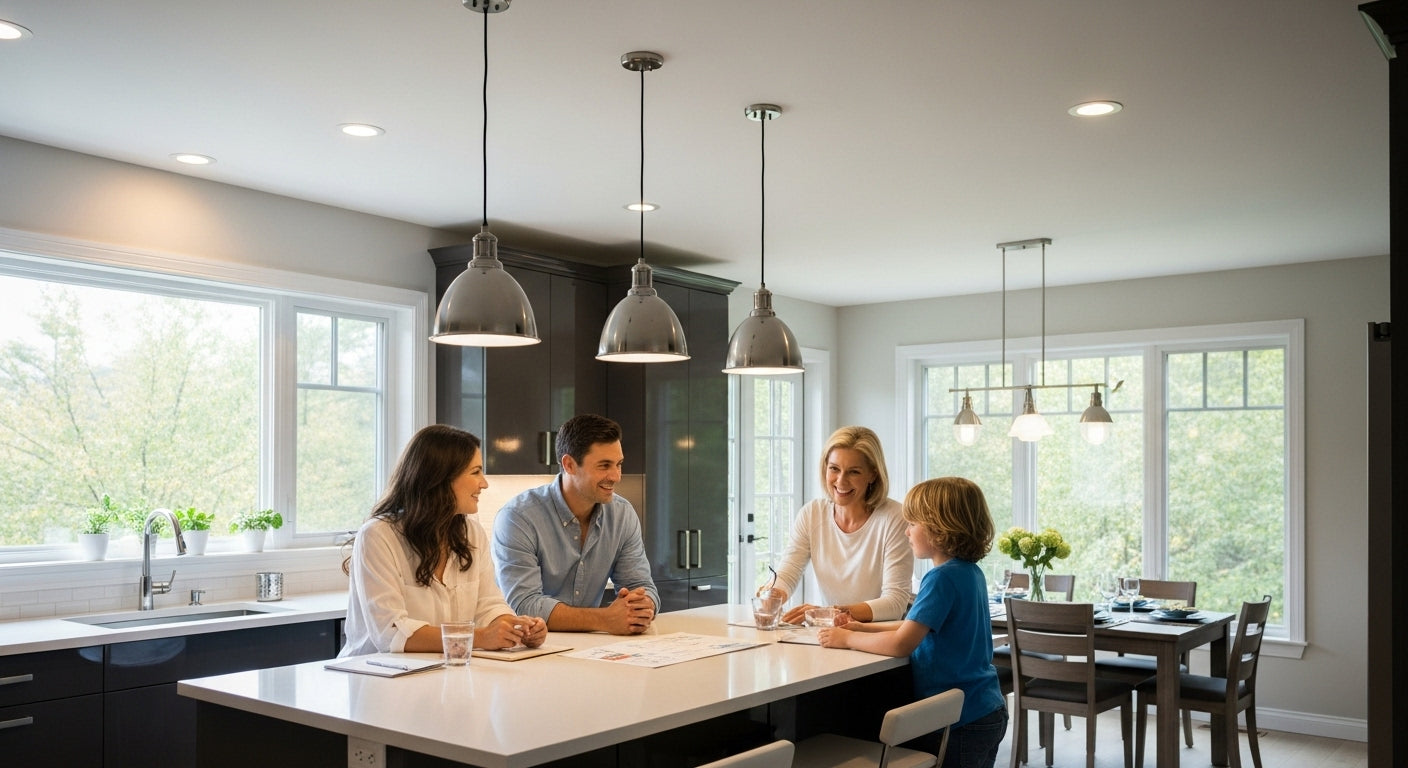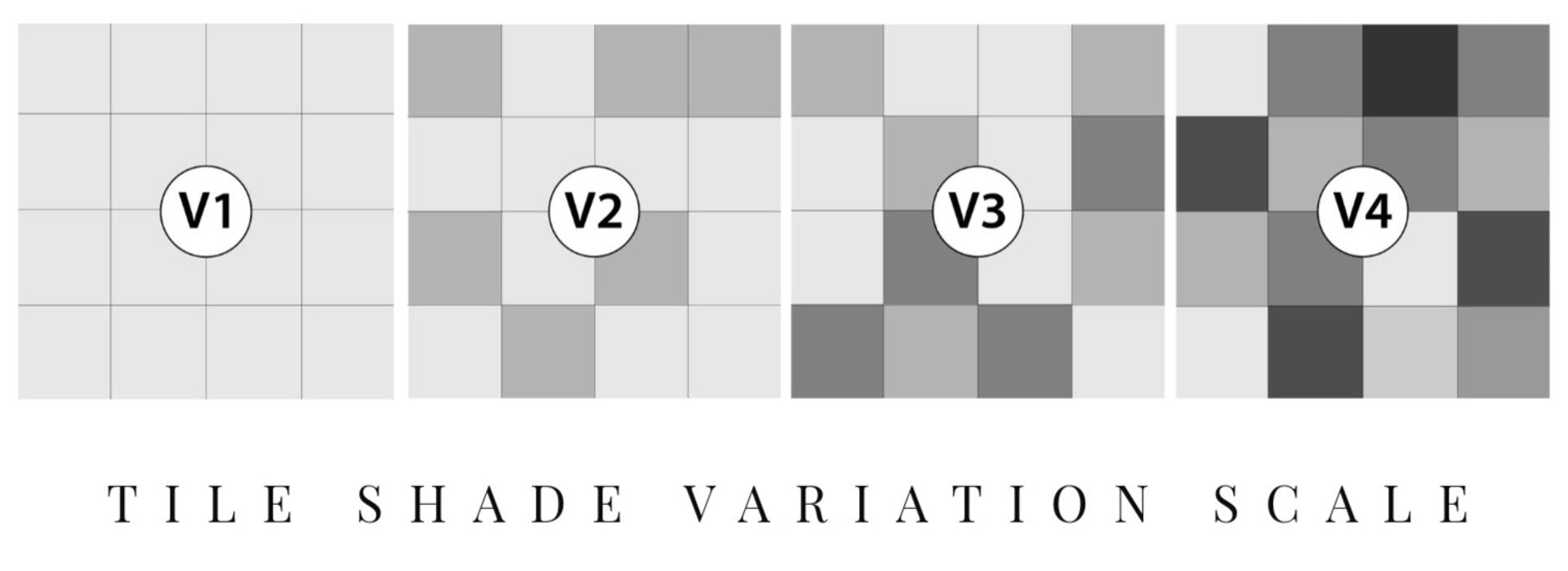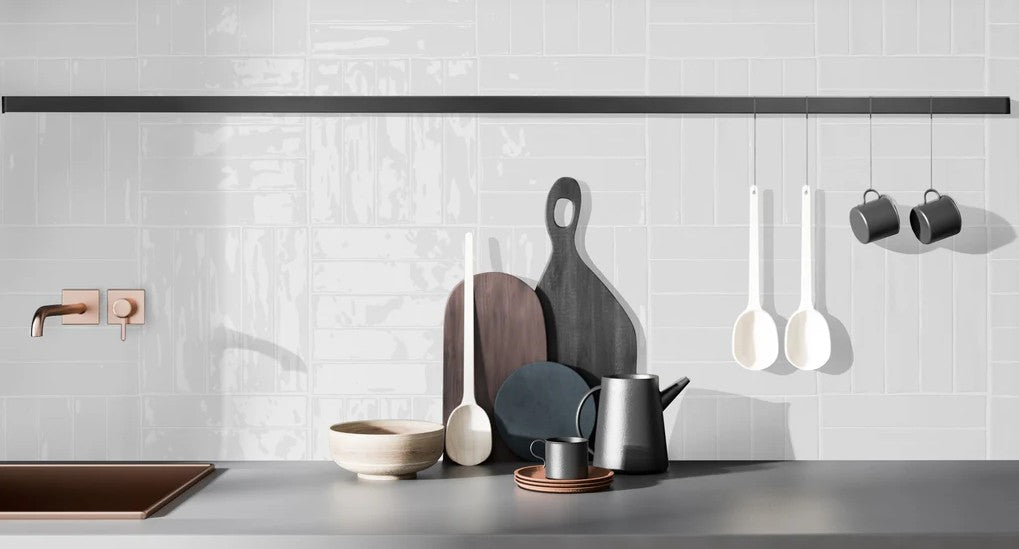Kitchen lighting shapes more than just your ability to see what you’re doing. Studies show LED bulbs use up to 75 percent less energy and last 25 times longer than incandescent lights. You might think that means you have to choose between style and efficiency. In reality, mixing the right fixtures, layering different light sources, and using smart controls can turn any kitchen into both a design showpiece and a high-functioning workspace.
Table of Contents
- Understand The Importance Of Lighting In Kitchens
- Layer Your Lighting For Best Results
- Choose The Right Fixtures For Your Style
- Incorporate Natural Light Into Your Design
- Highlight Key Areas With Accent Lighting
- Use Dimmers For Flexible Lighting Solutions
- Explore Eco-Friendly Lighting Options
- Consider Smart Lighting For Modern Convenience
Quick Summary
| Takeaway | Explanation |
|---|---|
| Layer Your Lighting Effectively | Combine ambient, task, and accent lighting for a functional kitchen. This approach enhances usability while creating a welcoming atmosphere. |
| Choose Fixtures that Reflect Your Style | Select lighting fixtures that complement your kitchen’s design and enhance its aesthetic appeal. Proper materials and styles can transform the space. |
| Incorporate Natural Light Wisely | Maximize window placements and reflective surfaces to improve mood and spatial perception. Natural light makes the kitchen feel larger and more inviting. |
| Implement Smart Lighting Solutions | Use smart lighting systems for customizable control over ambiance, automated settings, and integration with other devices for enhanced convenience. |
| Utilize Eco-Friendly Lighting Options | Opt for energy-efficient lighting like LEDs and recycled materials to reduce environmental impact while achieving a stylish look. Eco-friendly choices contribute to sustainability. |
1: Understand the Importance of Lighting in Kitchens
Lighting is more than just a functional necessity in kitchen design. It plays a critical role in transforming the space from a mere cooking area into a vibrant, welcoming environment that enhances both aesthetic appeal and practical functionality. Kitchen lighting inspiration goes beyond simply illuminating countertops and cooking areas.
In modern home design, kitchen lighting serves multiple purposes that extend far beyond basic visibility. According to Architectural Digest, proper lighting can dramatically impact the perceived size, mood, and usability of your kitchen space.
Key considerations for kitchen lighting include:
- Creating layers of illumination
- Highlighting architectural features
- Enhancing task efficiency
- Setting the right emotional atmosphere
The psychological impact of lighting should not be underestimated. Different lighting techniques can make a kitchen feel spacious, intimate, energetic, or calming. Strategically placed lights can visually expand smaller kitchens, create depth, and draw attention to specific design elements like unique backsplashes or statement countertops.
Professional designers recognize that kitchen lighting is a nuanced art form. It requires balancing three primary lighting types: ambient (overall room illumination), task lighting (focused work areas), and accent lighting (decorative and highlighting specific features). National Kitchen and Bath Association recommends a thoughtful combination of these lighting approaches to create a functional and visually appealing kitchen environment.
By understanding lighting’s multifaceted role, homeowners can transform their kitchen from a purely functional space into a dynamic, inviting area that reflects personal style and supports various activities seamlessly.
2: Layer Your Lighting for Best Results
Creating a well-illuminated kitchen requires a sophisticated approach known as lighting layering. This technique involves strategically combining different types of lighting to create depth, functionality, and visual interest. Lighting Design International emphasizes that successful kitchen lighting goes beyond a single light source.
The primary lighting layers include:
- Ambient lighting (general room illumination)
- Task lighting (focused work areas)
- Accent lighting (decorative and highlighting)
Ambient lighting serves as the foundation, providing overall illumination that ensures comfortable visibility throughout the kitchen. Ceiling-mounted fixtures or recessed lights typically handle this layer, creating a uniform light distribution that eliminates harsh shadows and creates a welcoming atmosphere.
Task lighting becomes crucial in work-intensive areas like countertops, cooking zones, and food preparation spaces. Under-cabinet lights and pendant lights positioned directly over islands or workspaces ensure that you have clear, focused illumination precisely where you need it most. These targeted light sources reduce eye strain and improve safety during complex cooking tasks.
Accent lighting adds drama and personality to your kitchen. According to Architectural Lighting Magazine, carefully placed accent lights can highlight architectural features, display areas, or create visual depth. Consider using LED strip lights inside glass cabinets, directional spotlights to showcase artwork, or subtle toe-kick lighting for a modern, sophisticated touch.
The art of kitchen lighting inspiration lies in balancing these layers seamlessly. Each type of lighting should complement the others, creating a harmonious and functional environment that adapts to different times of day and various kitchen activities.
3: Choose the Right Fixtures for Your Style
Selecting the right lighting fixtures is more than a functional decision. It is an opportunity to express your personal design aesthetic and create a cohesive kitchen environment. Houzz Design emphasizes that fixtures are visual statements that reflect your unique style and complement your overall kitchen design.
Fixture styles can dramatically transform your kitchen’s atmosphere. Contemporary spaces might lean towards minimalist pendant lights with clean lines and metallic finishes, while traditional kitchens could feature more ornate chandeliers or classic lantern-style hanging lights.
Consider these key fixture selection factors:
- Scale and proportion relative to kitchen size
- Complementary design with existing decor
- Material durability and maintenance requirements
- Color temperature of light emitted
Material choices play a significant role in fixture selection. Brass and copper fixtures add warmth and can create stunning focal points, while brushed nickel or stainless steel options provide a more contemporary, sleek appearance. Architectural Digest recommends selecting materials that harmonize with your kitchen’s existing hardware and appliance finishes.
Modern kitchen lighting inspiration embraces versatility. Adjustable fixtures with dimming capabilities allow you to create different moods and adapt lighting to various activities. Smart lighting systems now offer unprecedented control, enabling color temperature changes and remote operation through smartphone apps.
For those wanting to explore more creative design approaches, our guide on mixing design elements can provide additional inspiration for integrating unique lighting solutions that transform your kitchen’s aesthetic appeal.
4: Incorporate Natural Light into Your Design
Natural light represents a transformative element in kitchen lighting inspiration, offering benefits that extend far beyond simple illumination. Architectural Digest reveals that strategic natural light integration can enhance mood, improve visual perception, and create a sense of spaciousness.
Windows serve as more than architectural elements. They are dynamic light sources that change throughout the day, providing a natural rhythm to your kitchen’s ambiance. Maximizing natural light requires thoughtful design considerations:
- Selecting strategic window placements
- Choosing transparent or translucent window treatments
- Utilizing reflective surfaces to amplify natural light
- Considering skylights or solar tubes
Kitchen orientation plays a critical role in natural light optimization. North and east-facing kitchens typically receive softer, more consistent light, while south-facing spaces enjoy brighter, more intense illumination. West-facing windows offer warm afternoon light but can create significant heat during summer months.
Window treatments become essential in managing natural light. Sheer curtains, adjustable blinds, and frosted glass provide flexibility in controlling light intensity and maintaining privacy. Modern design trends increasingly favor minimalist window treatments that maximize light transmission while offering subtle visual filtering.
Reflective surfaces can dramatically enhance natural light distribution. Glossy backsplashes, light-colored countertops, and strategically placed mirrors can amplify and redirect incoming sunlight, creating a brighter, more expansive kitchen environment. Interior Design Magazine suggests using light neutral colors to further enhance light reflection and create an open, airy atmosphere.
By integrating natural and artificial lighting thoughtfully, you can create a dynamic, inviting kitchen that feels both functional and aesthetically inspiring.
5: Highlight Key Areas with Accent Lighting
Accent lighting transforms ordinary kitchen spaces into extraordinary visual experiences. Kitchen lighting inspiration reaches new heights when strategic accent lighting draws attention to specific design elements and creates depth. Lighting Design International emphasizes that accent lighting is not merely decorative but a powerful tool for spatial storytelling.
Key areas ideal for accent lighting include:
- Architectural niches
- Display shelving
- Unique backsplash designs
- Kitchen island perimeters
- Inside glass-front cabinets
LED technology has revolutionized accent lighting possibilities. Flexible LED strips and directional mini-spotlights allow unprecedented precision in highlighting specific kitchen features. These versatile light sources can be tucked into unexpected spaces, creating dramatic visual effects that elevate your kitchen’s aesthetic.
Color temperature plays a crucial role in accent lighting design. Warm white lights (2700-3000K) create an inviting, cozy atmosphere, while cooler temperatures (4000-5000K) provide a more crisp, modern feel. Architectural Lighting Magazine recommends selecting color temperatures that complement your kitchen’s overall design palette.
For homeowners seeking creative approaches, our guide on mixing design elements can provide additional inspiration for integrating unique lighting solutions that transform your kitchen’s visual narrative.
Consider the interplay between accent lights and existing fixtures. The goal is not to overwhelm but to create subtle visual interest. Carefully placed accent lights can make artwork, architectural details, or textural elements pop, turning ordinary kitchen spaces into extraordinary design statements.
6: Use Dimmers for Flexible Lighting Solutions
Dimmers represent a sophisticated approach to kitchen lighting inspiration, offering unprecedented control over your space’s ambiance and functionality. Electrical Engineering Journal highlights that modern dimmer systems provide more than just light intensity adjustment they transform how we interact with our kitchen environments.
Benefits of implementing dimmer systems include:
- Precise light level customization
- Energy consumption reduction
- Extended bulb lifespan
- Mood and activity adaptation
- Enhanced visual comfort
Smart dimming technologies have revolutionized lighting control, moving beyond traditional wall-mounted switches. Contemporary systems integrate smartphone apps, voice controls, and programmable scenes that allow seamless transitions between different lighting configurations. These advanced solutions enable homeowners to create preset lighting scenarios for cooking, entertaining, or late-night snacking.
Color temperature manipulation becomes another exciting feature of modern dimmer systems. Some advanced LED dimmers allow users to shift between warm and cool light spectrums, providing remarkable versatility. Architectural Lighting Magazine notes that this capability can significantly impact kitchen atmosphere and user experience.
When selecting dimmer systems, consider compatibility with your existing light fixtures and bulb types. LED and smart bulb technologies require specific dimmer modules to function optimally. Electrical considerations are crucial, including load capacity, minimum wattage requirements, and potential interference with other smart home systems.
For homeowners seeking creative lighting approaches, our guide on mixing design elements can provide additional insights into integrating flexible lighting solutions that enhance both aesthetic and functional kitchen design.
7: Explore Eco-Friendly Lighting Options
Sustainable kitchen lighting inspiration represents a critical intersection of design, technology, and environmental responsibility. Environmental Design Research demonstrates that eco-friendly lighting solutions can significantly reduce energy consumption while maintaining aesthetic excellence.
Key eco-friendly lighting considerations include:
- Energy efficiency ratings
- Renewable material construction
- Low heat emission technologies
- Extended lifespan performance
- Recyclable components
LED technology stands at the forefront of sustainable lighting solutions. These advanced bulbs consume up to 75% less energy compared to traditional incandescent options and can last 25 times longer. Energy Star Certification confirms that LED lights represent a transformative approach to reducing household energy consumption.
Manufacturers are increasingly developing lighting fixtures using recycled and sustainable materials. Bamboo, reclaimed wood, and recycled metal components are becoming popular in eco-conscious kitchen lighting design. These materials not only reduce environmental impact but also introduce unique textural elements to kitchen spaces.
Solar-integrated lighting systems offer another innovative approach to sustainable kitchen illumination. Photovoltaic technologies can now seamlessly integrate into kitchen design, providing energy-efficient solutions that draw power directly from natural sunlight.
For homeowners seeking creative sustainable design approaches, our guide on mixing design elements can provide additional insights into integrating environmentally conscious lighting solutions that enhance both aesthetic appeal and ecological responsibility.
8: Consider Smart Lighting for Modern Convenience
Smart lighting technologies represent the pinnacle of kitchen lighting inspiration, transforming traditional illumination into an intelligent, responsive system. Technology Design Journal reveals that modern smart lighting goes far beyond simple on-off functionality, offering unprecedented control and customization.
Advanced smart lighting capabilities include:
- Voice-activated controls
- Smartphone app management
- Automated scheduling
- Motion sensor integration
- Color temperature adjustment
Integrated ecosystem connectivity allows homeowners to create comprehensive lighting experiences. Contemporary smart lighting systems can synchronize with other home devices, enabling scenarios like automatic light adjustments when cooking, entertaining, or transitioning between different kitchen activities. Smart Home Technology Magazine highlights how these systems learn user preferences and adapt lighting automatically.
Security and energy management become additional benefits of smart lighting technologies. Programmable lighting sequences can simulate occupancy when you’re away, deterring potential intrusions. Advanced systems also provide detailed energy consumption reports, helping homeowners optimize their electricity usage.
Wireless protocols like Zigbee, Z-Wave, and WiFi enable seamless communication between different smart lighting components. Installation flexibility means homeowners can gradually upgrade their kitchen lighting without complete system replacement.
For homeowners seeking creative design integration, our guide on mixing design elements can provide additional insights into incorporating cutting-edge smart lighting solutions that enhance both technological convenience and aesthetic appeal.
Bring Your Kitchen Lighting Vision to Life With the Perfect Tile Backdrop
Are you struggling to make your kitchen lighting ideas truly stand out? Inspiration is nothing without the right materials to support it. The article explored how layering light, adding accent features, and using reflective surfaces transform a kitchen’s mood and functionality. But surfaces like backsplashes and walls play just as big a role in amplifying light and letting fixtures shine. The right tiles can help bounce natural sunlight around your space, enhance your accent lighting, and bring depth to every illuminated detail.

Ready to pair your new lighting plan with stylish, high-quality tiles that make your kitchen unforgettable? Discover hundreds of beautiful ceramic, glass, porcelain, and metal options at TileChoices.com. Take your next renovation step now and explore our curated inspirations, sample requests, and mix-and-match tile ideas. Let us help you reflect your lighting dreams on every surface.
The table below summarizes the key ideas, steps, and benefits covered in the article to help you design efficient, stylish, and functional kitchen lighting for your renovation.
| Key Topic | Main Ideas & Applications | Benefits & Outcomes |
|---|---|---|
| Importance of Kitchen Lighting | Lighting transforms mood, enhances functionality, impacts perception of space, and highlights design features. | Creates a vibrant, usable, and inviting environment |
| Layered Lighting Approach | Combine ambient, task, and accent lighting for balanced illumination. | Enhances usability, flexibility, and aesthetic appeal |
| Choosing Fixtures for Style | Select fixtures that complement the kitchen design, considering scale, materials (e.g., brass, copper), durability, and color temperature. | Reinforces personal style and visual impact |
| Incorporating Natural Light | Use strategic window placement, reflective surfaces, window treatments, and possible skylights to maximize daylight. | Improves spatial perception, mood, and reduces need for artificial lighting |
| Accent Lighting Techniques | Employ LED strips, spotlights, and under-cabinet lights to highlight key features such as islands, backsplashes, and artwork. | Adds visual interest and draws attention to focal areas |
| Flexible Lighting with Dimmers | Integrate dimmers and smart controls for scene setting, energy savings, and color temperature adjustments. | Customizable ambiance, reduced energy use, and extended bulb life |
| Eco-Friendly Lighting Solutions | Use LED bulbs, recycled materials, and energy-efficient options; consider solar integration. | Lower energy consumption, sustainability, and longer product lifespan |
| Smart Lighting for Modern Convenience | Incorporate app/voice control, automated scenes, and integration with home systems. | Enhanced convenience, security, and tailored lighting experiences |
Frequently Asked Questions
What are the main types of kitchen lighting?
Kitchen lighting typically includes three main types: ambient lighting (general room illumination), task lighting (focused on work areas), and accent lighting (highlighting specific features). Combining these types creates a well-layered lighting design.
How can I effectively layer my kitchen lighting?
To layer your kitchen lighting, combine ambient, task, and accent lighting. Use ceiling-mounted fixtures for ambient light, under-cabinet lights or pendant lights for task lighting, and strategically placed LED strips or spotlights for accenting decorative elements.
What factors should I consider when choosing kitchen lighting fixtures?
When selecting kitchen lighting fixtures, consider the scale and proportion relative to your kitchen size, design cohesion with existing decor, material durability, and the color temperature of the emitted light to create the desired ambiance.
How can I incorporate natural light into my kitchen design?
Incorporating natural light can be achieved by selecting strategic window placements, choosing transparent window treatments, using reflective surfaces to amplify light, and considering skylights or solar tubes to enhance brightness and mood in the kitchen.









